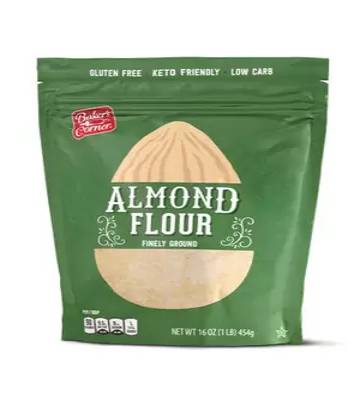Food Nutrition Facts
Nutrition Facts For
Almond Flour
Portion Size: 1/4 Cup
| Nutrient | Value | % Daily Value* |
|---|---|---|
| 480.0 kcal | 24% | |
| 14.0 g | 2% | |
| 1.0 g | 0% | |
| 0.0 mg | 0% | |
| 10 mg | 0% | |
| 192.0 mg | 6% | |
| 18.0 g | ||
| 3.0 g | ||
| 6.0 g | ||
| 6.0 g | ||
| 6.0 g | ||
| Flour Substitute |
*Daily value based on a 2,000 calorie diet. Your daily values may be higher or lower depending on your calorie needs and health goals.
Calculate your daily calorie needs here
Nutrition Facts For 1/4 Cup of Almond Flour

Almond flour is a popular gluten-free alternative to traditional wheat flour, made from ground blanched almonds. The process involves removing the skins from the almonds and then grinding them into a fine, powdery consistency. This results in a flour that is not only gluten-free but also rich in nutrients, including protein, healthy fats, and vitamin E. Almond flour has a slightly nutty flavor and a delicate texture, which can impart a subtle sweetness and moistness to baked goods. Its versatility makes it suitable for a wide range of recipes, from cakes and cookies to breads and even savory dishes.
Compared to wheat flour, almond flour has a denser texture and absorbs liquids differently. This often requires adjustments in recipes, such as using slightly less almond flour than wheat flour or adding extra binding agents like eggs. Despite these differences, almond flour's unique characteristics make it a desirable ingredient for those seeking gluten-free options or looking to add a boost of nutrition to their cooking. Its popularity continues to grow as more people discover its potential in creating delicious and wholesome meals.







